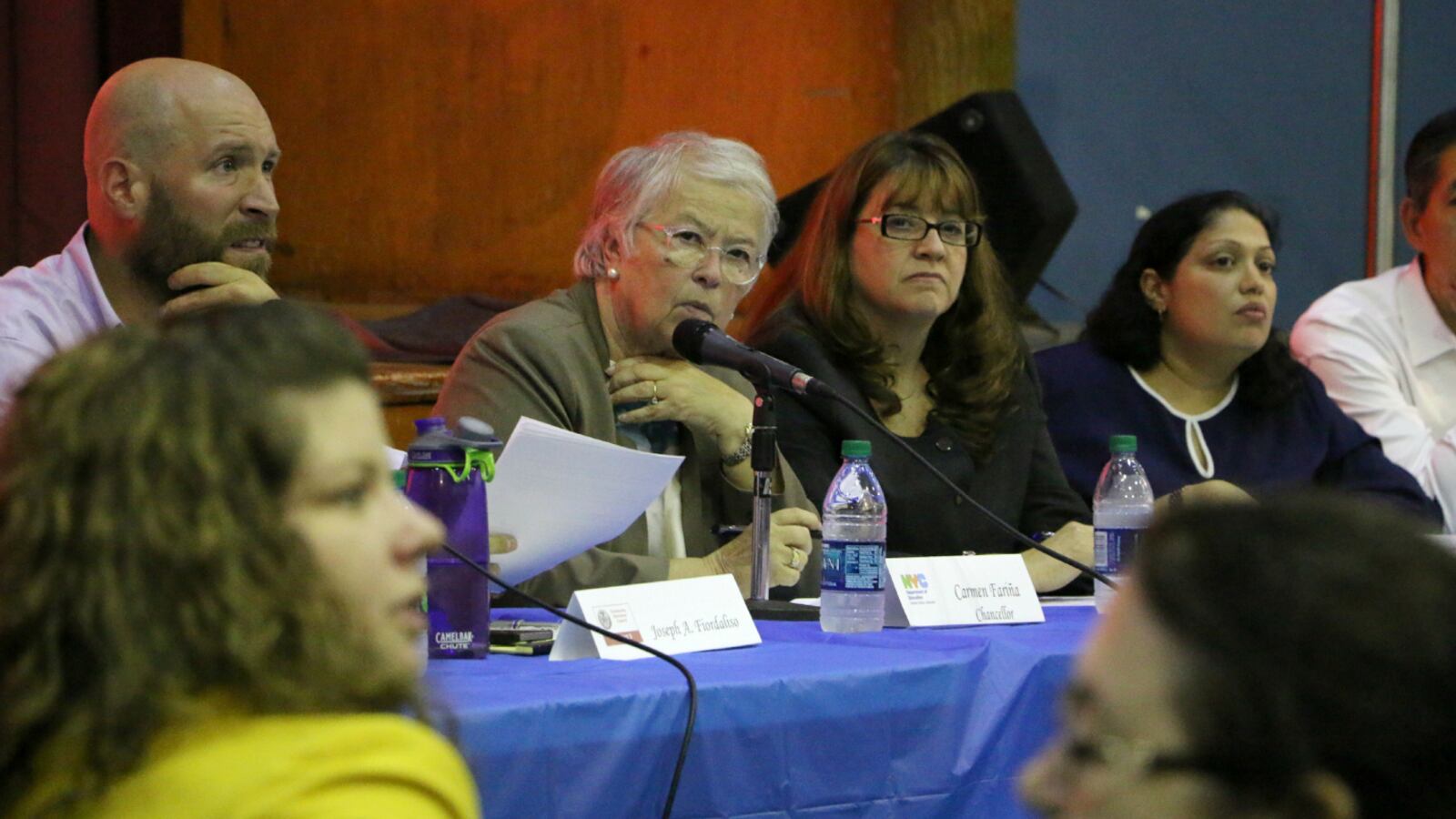The deadline is fast approaching for New York City officials to release their “bigger vision” plan to promote school diversity, and advocates are once again demanding more input on the final proposal.
In a draft letter obtained by Chalkbeat, a self-described group of “parents, students, educators, advocates and elected officials” pushes the education department to declare integration a priority, include the community in any plans that will be put forward, and to adopt “systemic” approaches to desegregate city schools.
“We do not pretend that it will be easy,” states the letter, which is addressed to Chancellor Carmen Fariña. “But we insist that it is logistically possible, educationally sound, and morally necessary.”
In April, Councilman Brad Lander presented a similar letter to members of the “New York City Alliance for School Integration and Desegregation,” or ASID — a relatively new group of desegregation advocates from across the city.
Councilman Lander’s office declined to comment.
Mayor Bill de Blasio and the education department have said they will release a plan to address school segregation by June. The state has one of the most segregated school systems in the country, driven in large part by New York City, and advocates have been pushing for years for a large-scale remedy.
In 2015, advocates sent a similar letter to the department that included some of the same requests, including the adoption of a formal policy statement making integration a priority. When asked about that in an August 2016 interview, Fariña told Chalkbeat: “Proclamations, without a plan of action, are proclamations.”
A new element of the advocate’s proposal calls for integration efforts to start in pre-K. Parents can apply to any of the city’s universal pre-K sites, but pre-K classrooms are more segregated than kindergartens, according to a recent report. The letter also calls for the education department to set “measureable goals” towards desegregation.
In recent years, the education department has moved forward with some plans to increase diversity in schools, such as allowing schools to set aside a certain percentage of seats for students who are low-income, learning English, or meet other criteria. But advocates have criticized that approach as piecemeal and are eagerly awaiting the city’s broader diversity plan.
See full letter below:

